Abstract
1. Under certain conditions D-lysergic acid diethylamide (LSD), 10-9-10-6 g/ml., exerted an immediate, prolonged and slowly reversible inhibitory effect upon the post-ganglionic motor transmission in desheathed guinea-pig vas deferens preparations.
2. The most critical factor influencing this action of LSD appeared to be the train length. With short trains of less than 4 or 5 pulses the twitch inhibition produced by LSD was often total. With longer trains (5-20 pulses), the degree of inhibition declined with increase in train length. These results suggest the existence of two components in the motor response to post-ganglionic stimulation, distinguished by their susceptibility to LSD.
3. The inhibition of the LSD-susceptible component was related to the dose of LSD in the range 10-9-10-6 g/ml., reaching a maximum at 0·5-1 × 10-6 g/ml. The response remnants elicited by trains of more than 5 pulses under these conditions could not be reduced further by a ten- to twenty-fold increase in LSD concentration to 10-5 g/ml. and were in fact slightly potentiated.
4. The inhibition of post-ganglionic motor transmission by LSD was not explicable on the basis of an α-adrenoceptor blockade because it was not associated with any reduction in motor responses to noradrenaline.
5. The use of propranolol excluded mediation of the LSD-inhibition by β-adrenoceptors.
6. The LSD effect was not due to a non-specific smooth muscle depression because it was not associated with any reduction in motor responses to acetylcholine, ATP or bradykinin.
7. The inhibitory effect of LSD on post-ganglionic transmission resembled that of noradrenaline in that it was antagonized by phentolamine; another α-adrenoceptor blocking agent, phenoxybenzamine, was less effective than phentolamine in this respect.
8. The LSD-inhibition was obtained in preparations taken from reserpinized guinea-pigs.
9. The inhibition of motor transmission in the vas deferens by LSD was confirmed in rats, Meriones shawii and rabbits.
10. The inhibition of post-ganglionic transmission by LSD was unrelated to its ability to antagonize 5-hydroxytryptamine (5-HT), to which the longitudinal muscle of the guinea-pig vas deferens is insensitive. The more potent 5-HT antagonists, methysergide and BOL 148 were either virtually inactive or considerably weaker than LSD.
Full text
PDF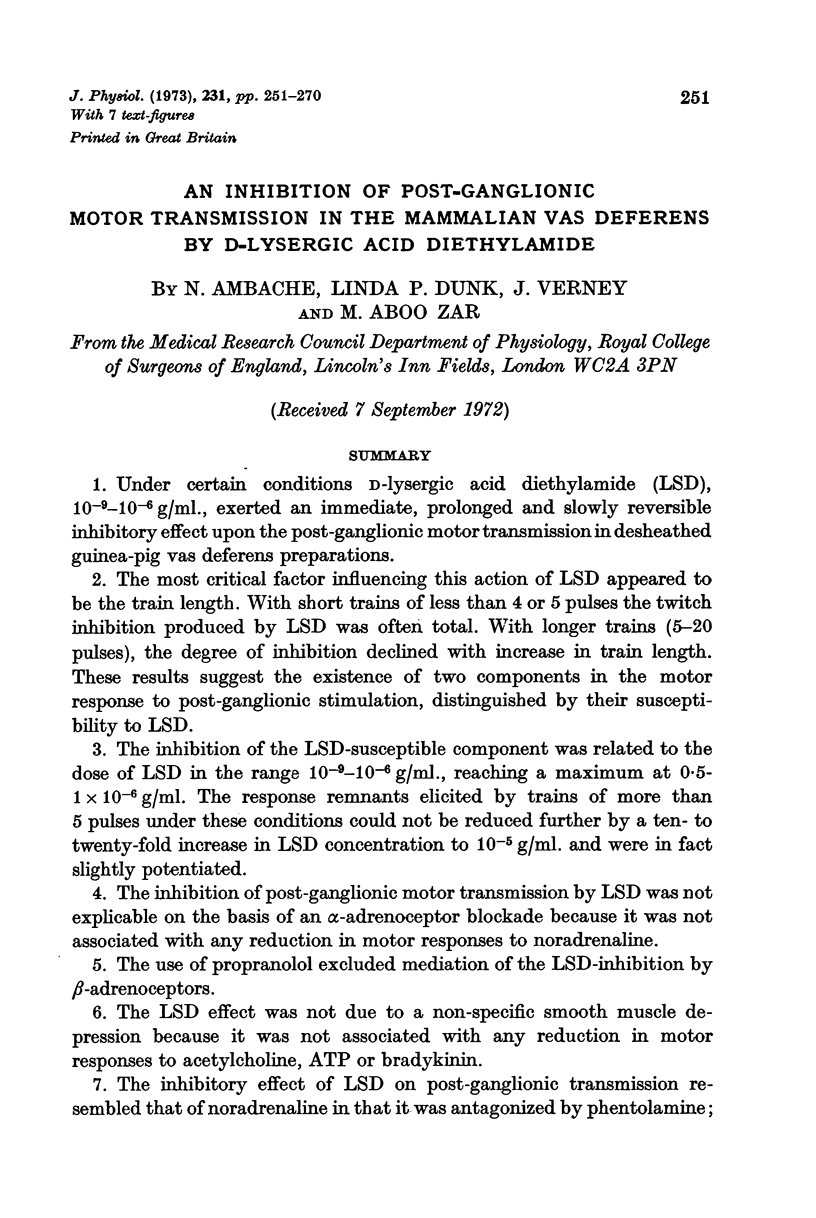
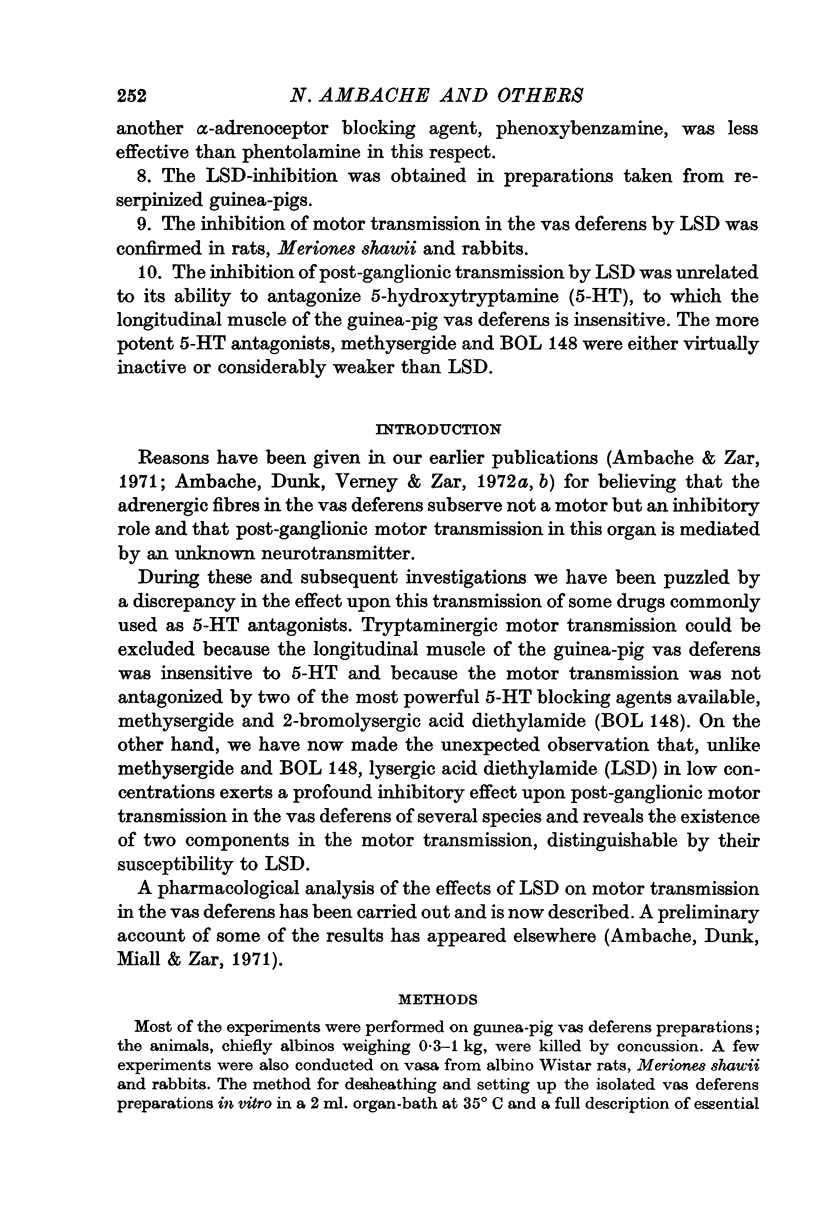
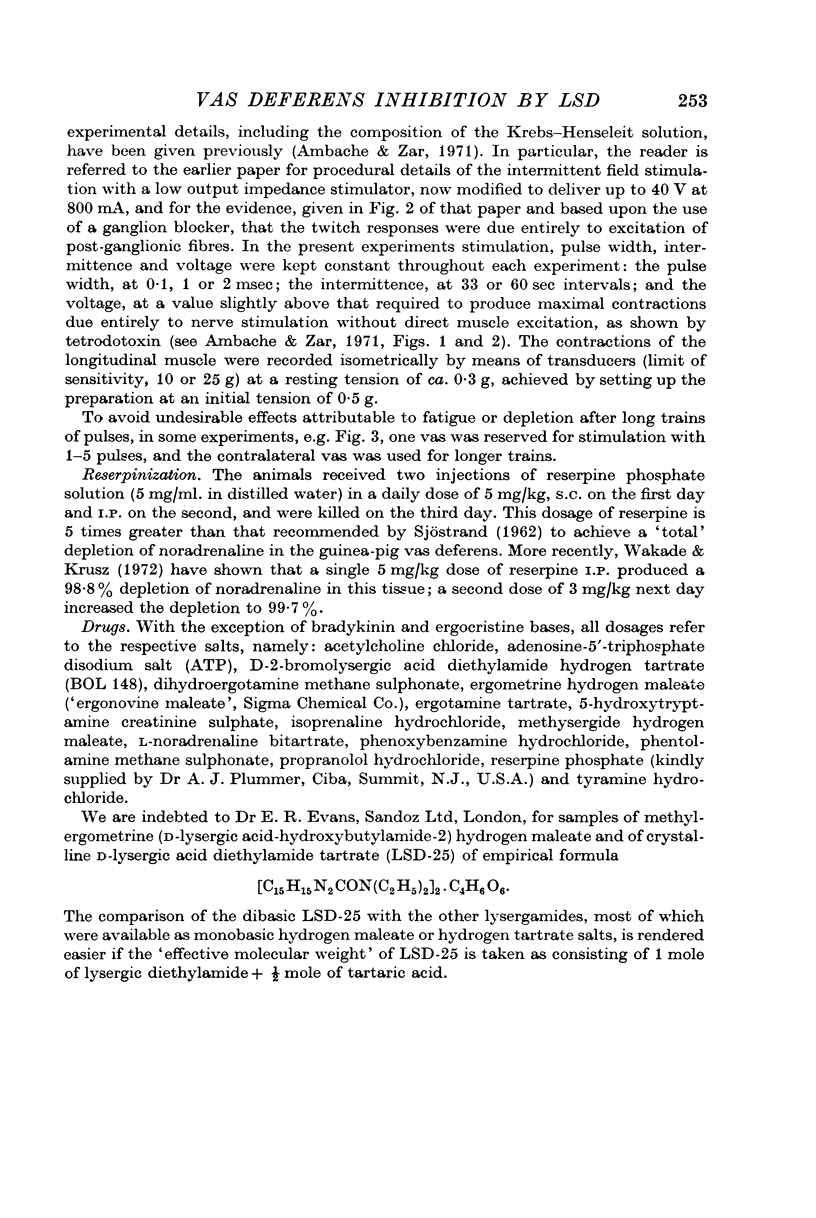
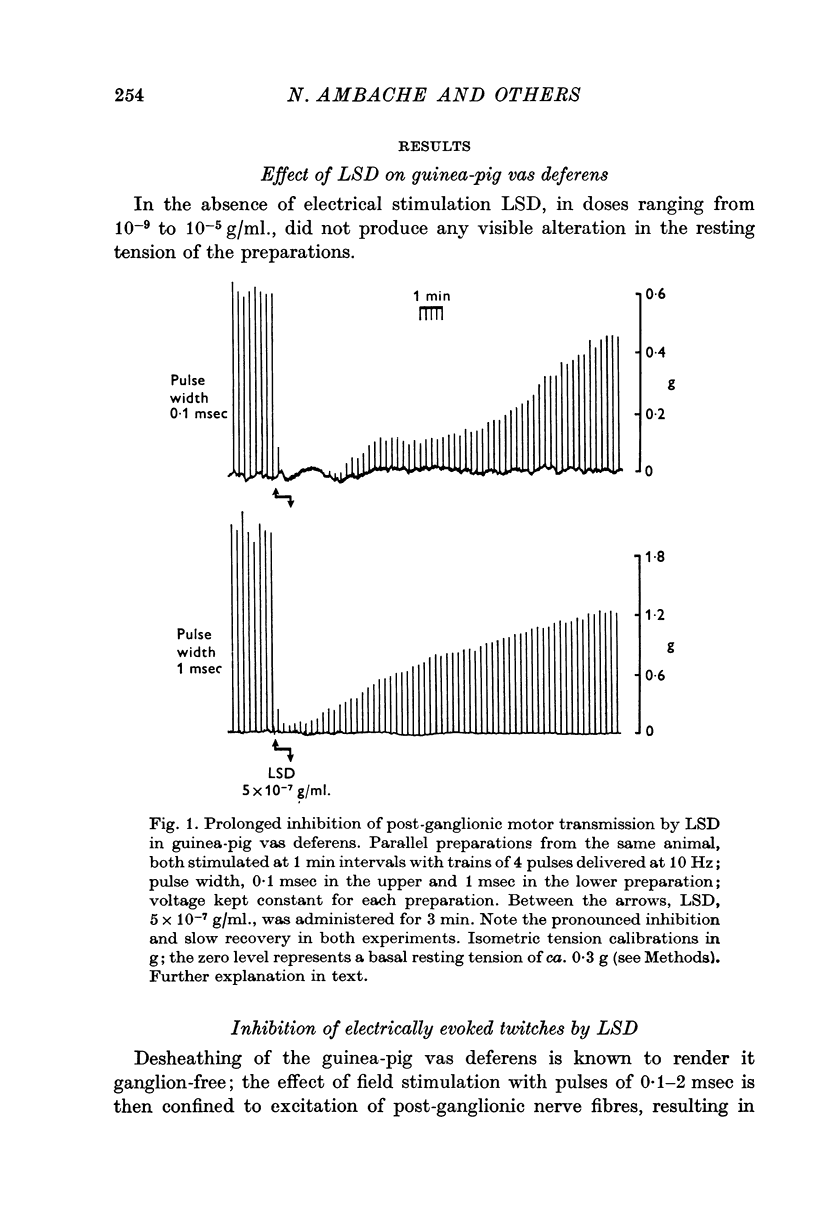
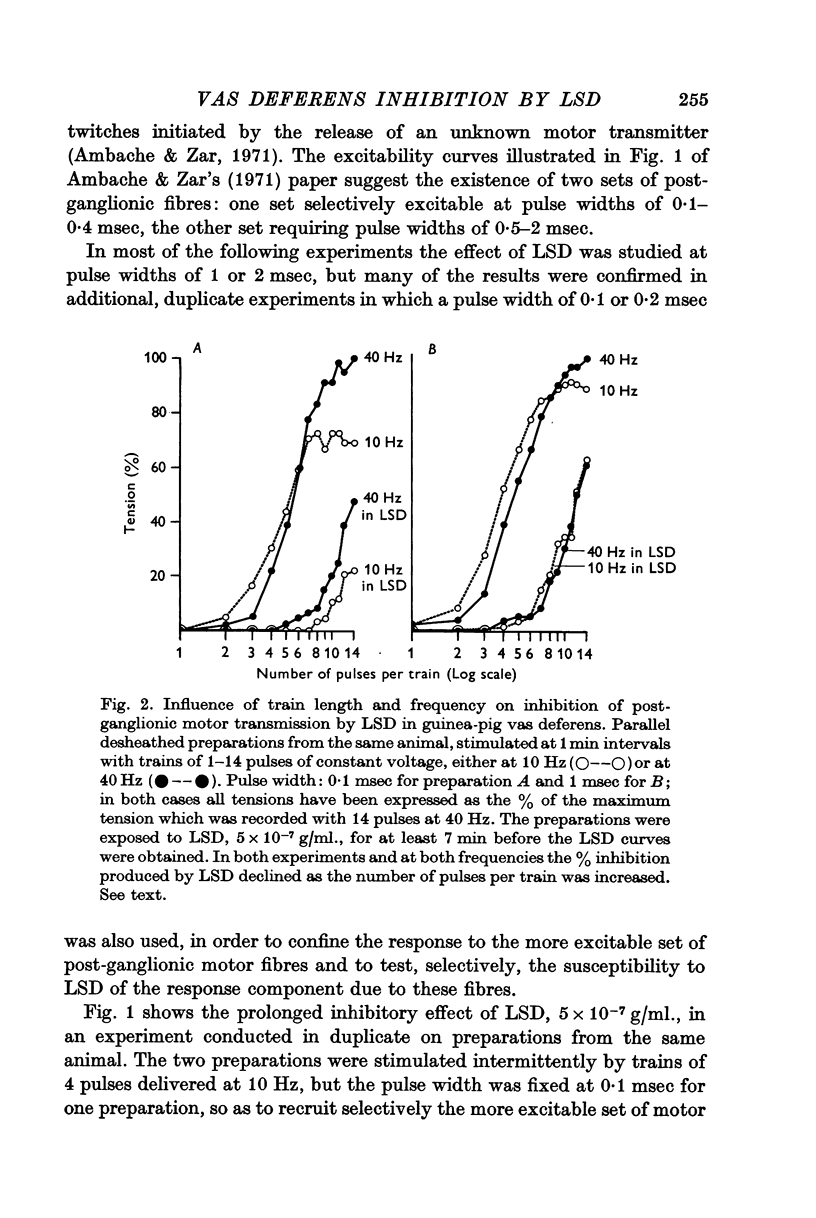
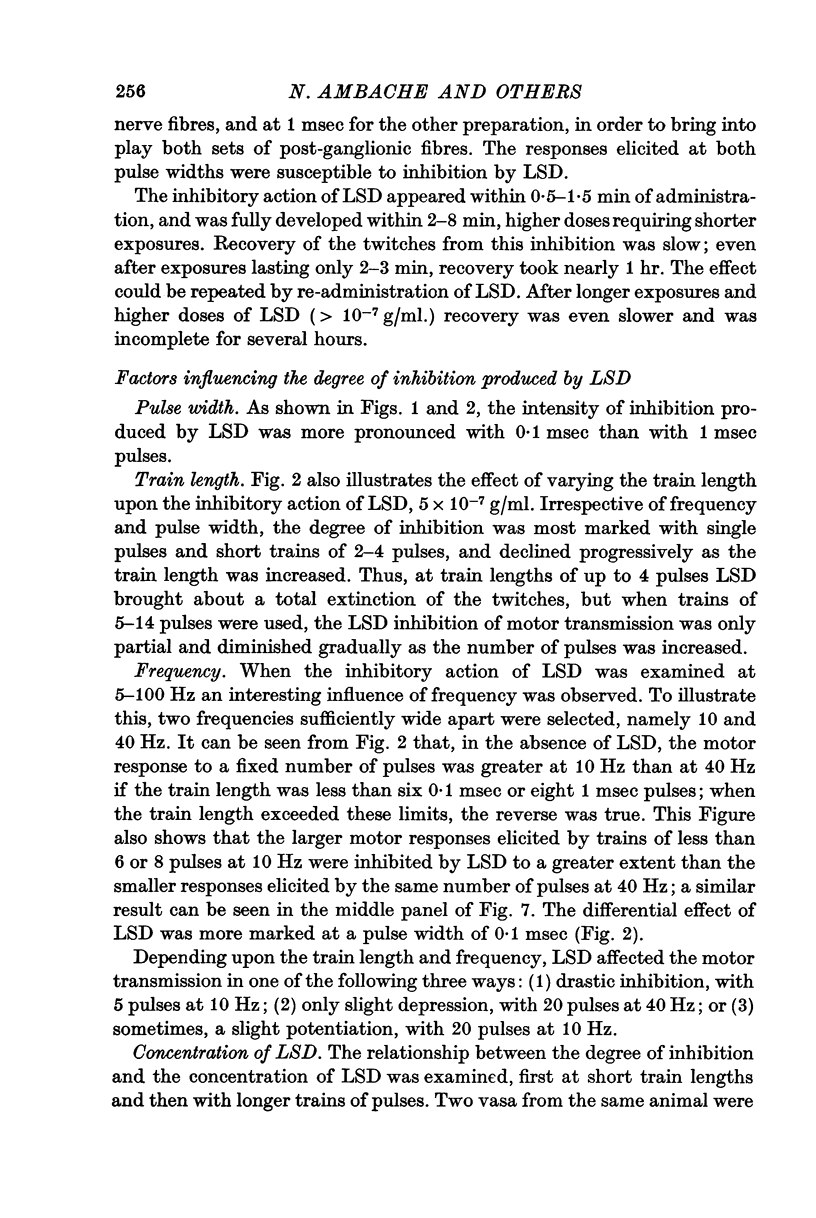
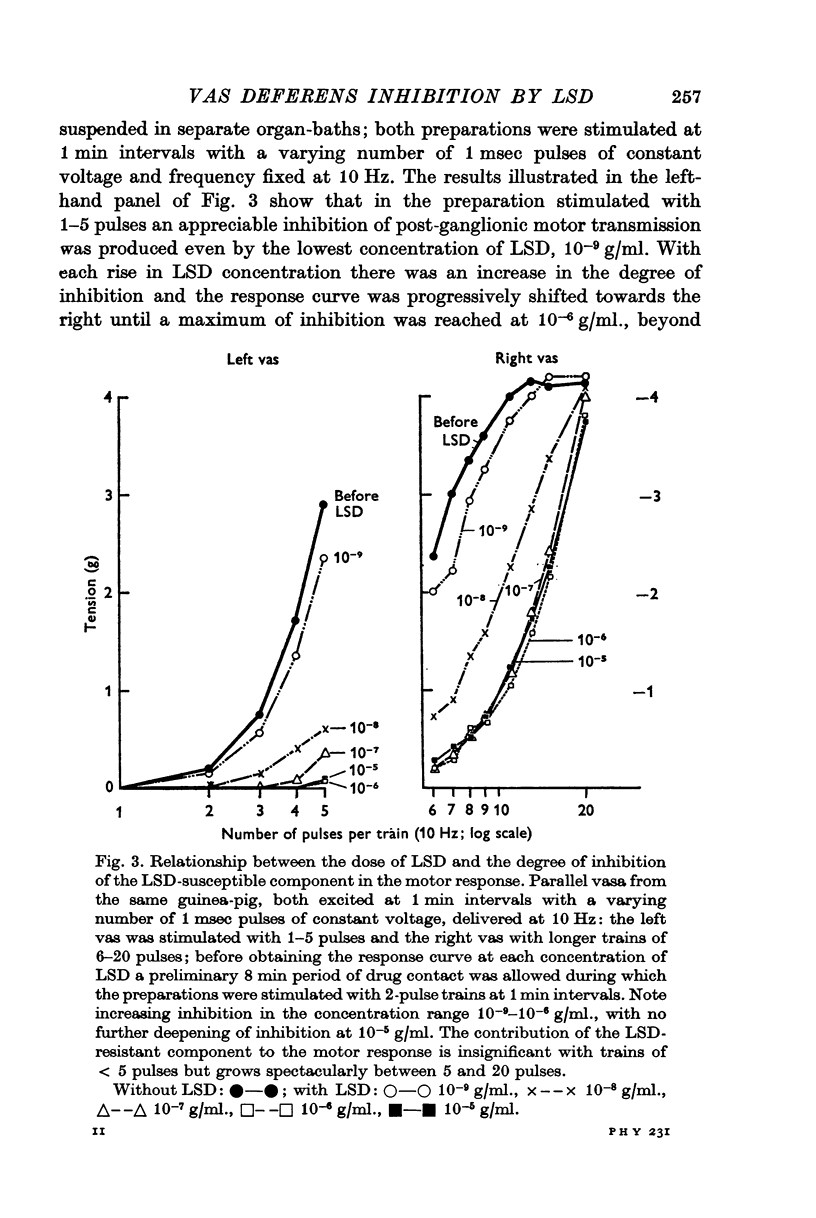
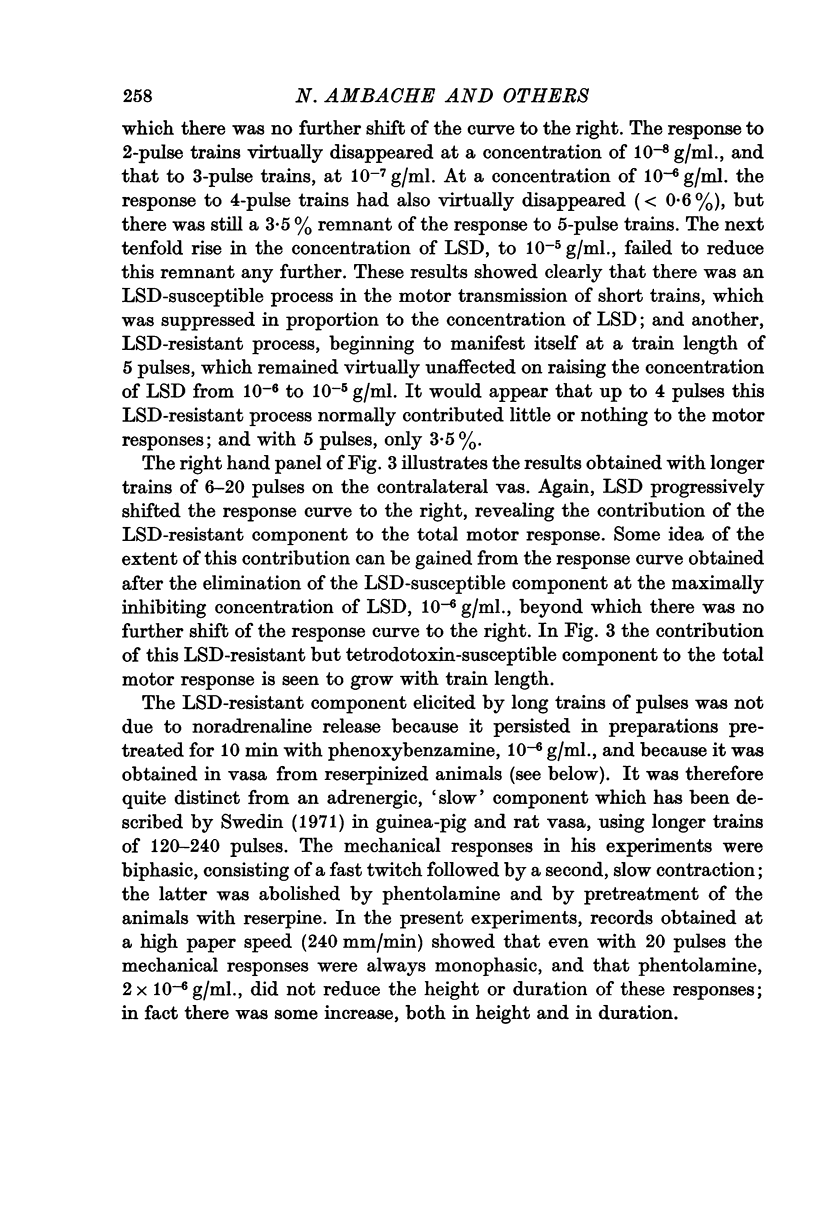
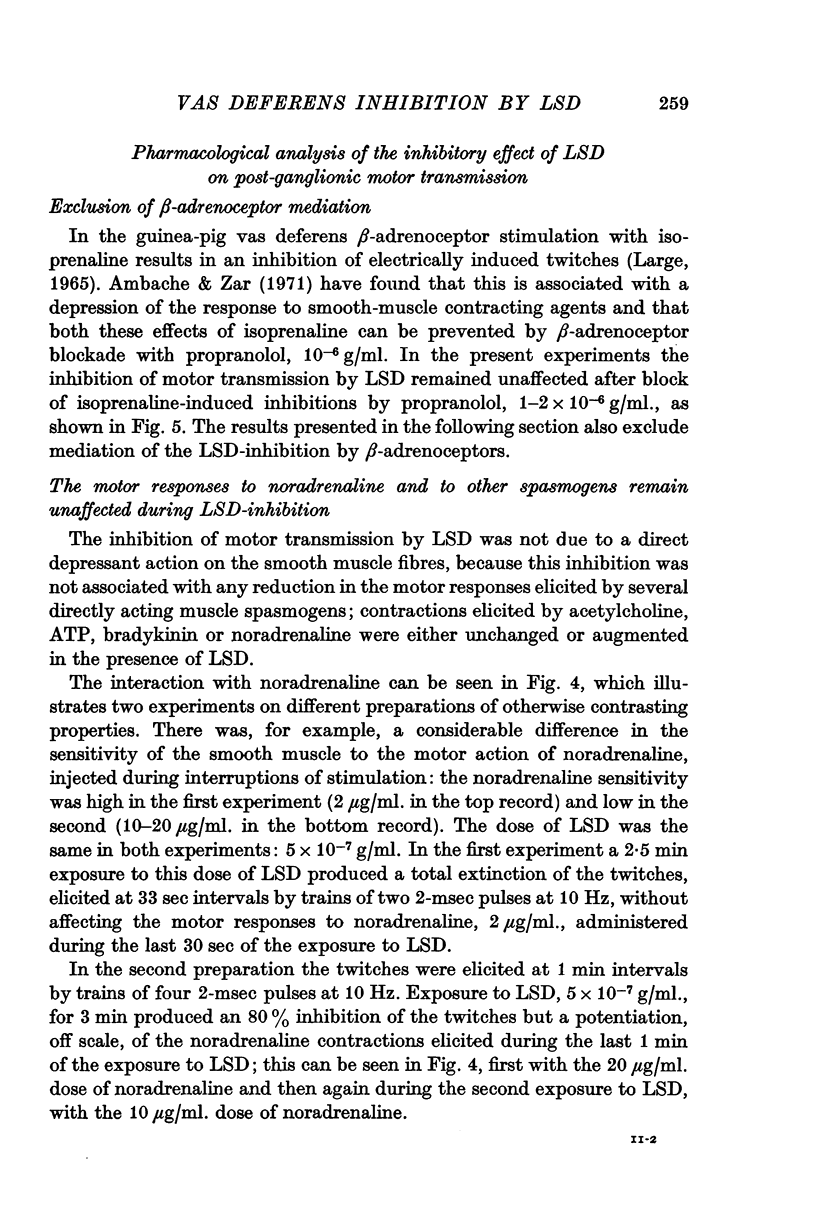
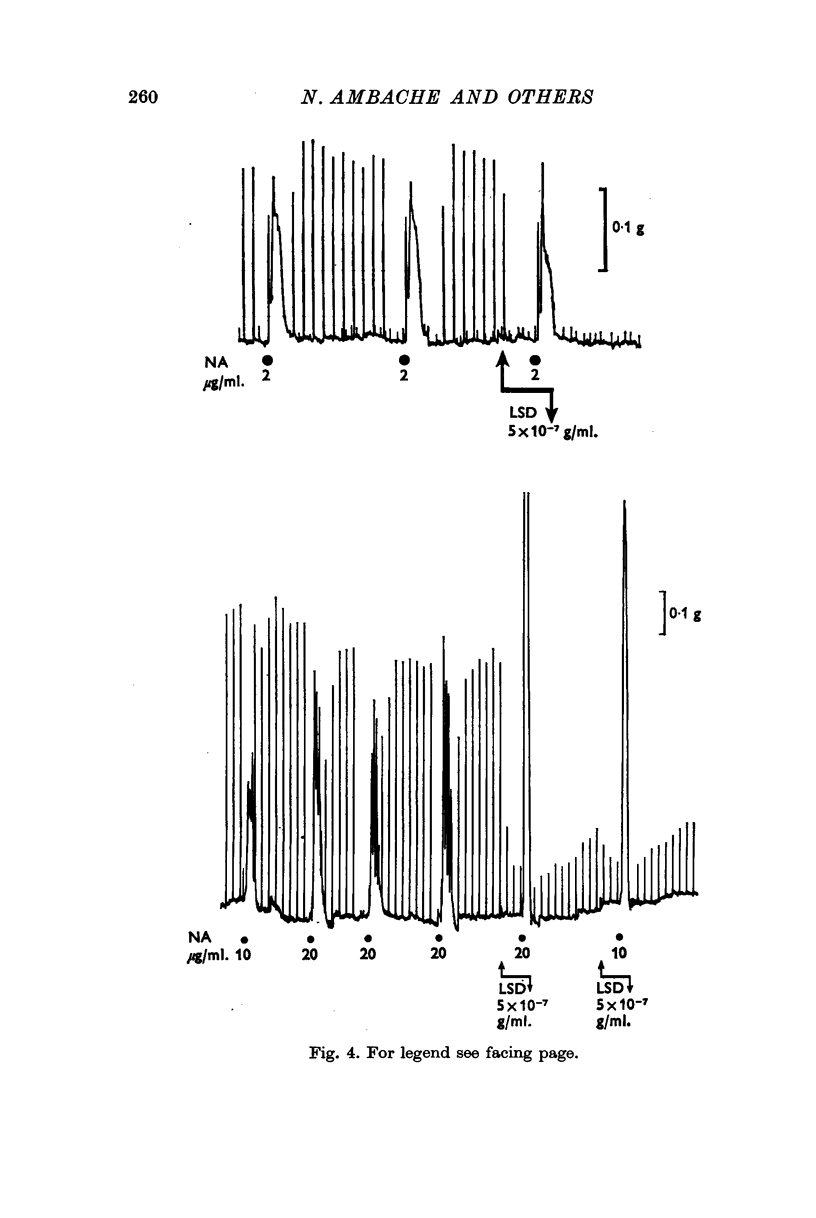

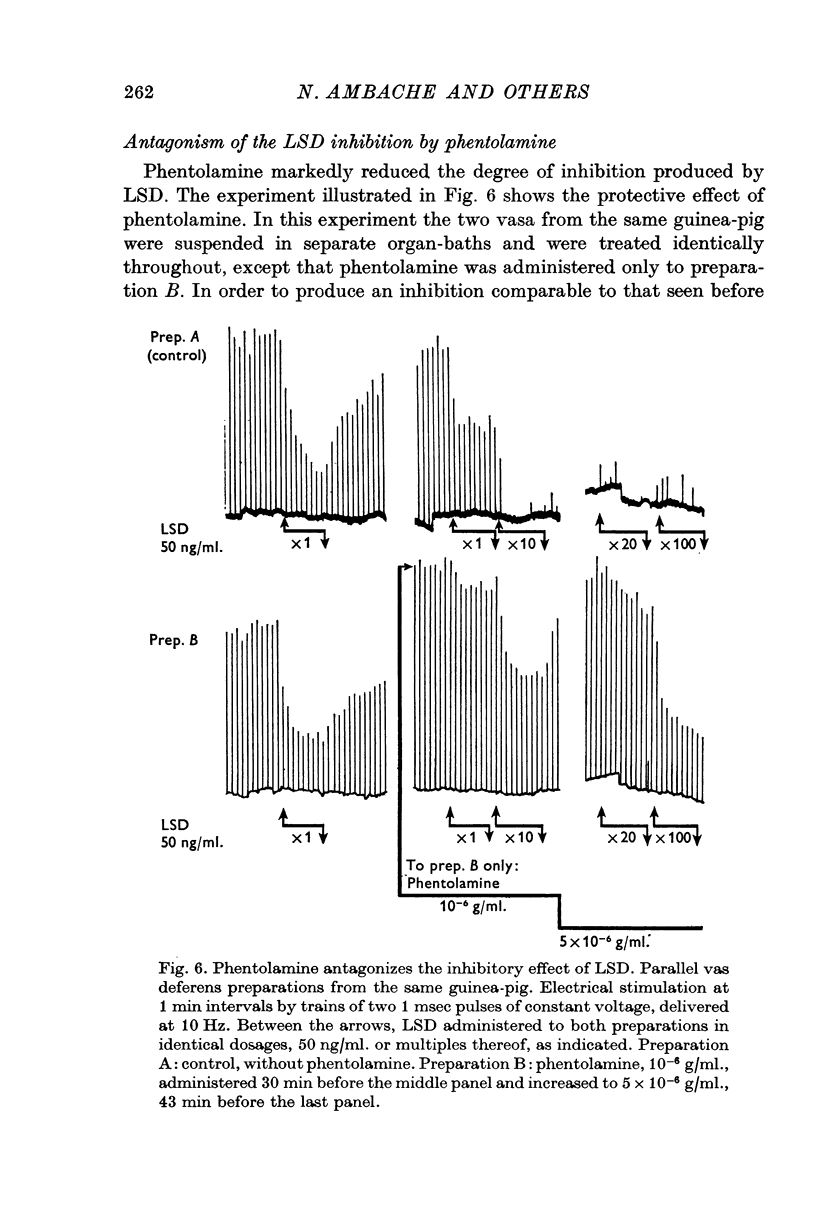
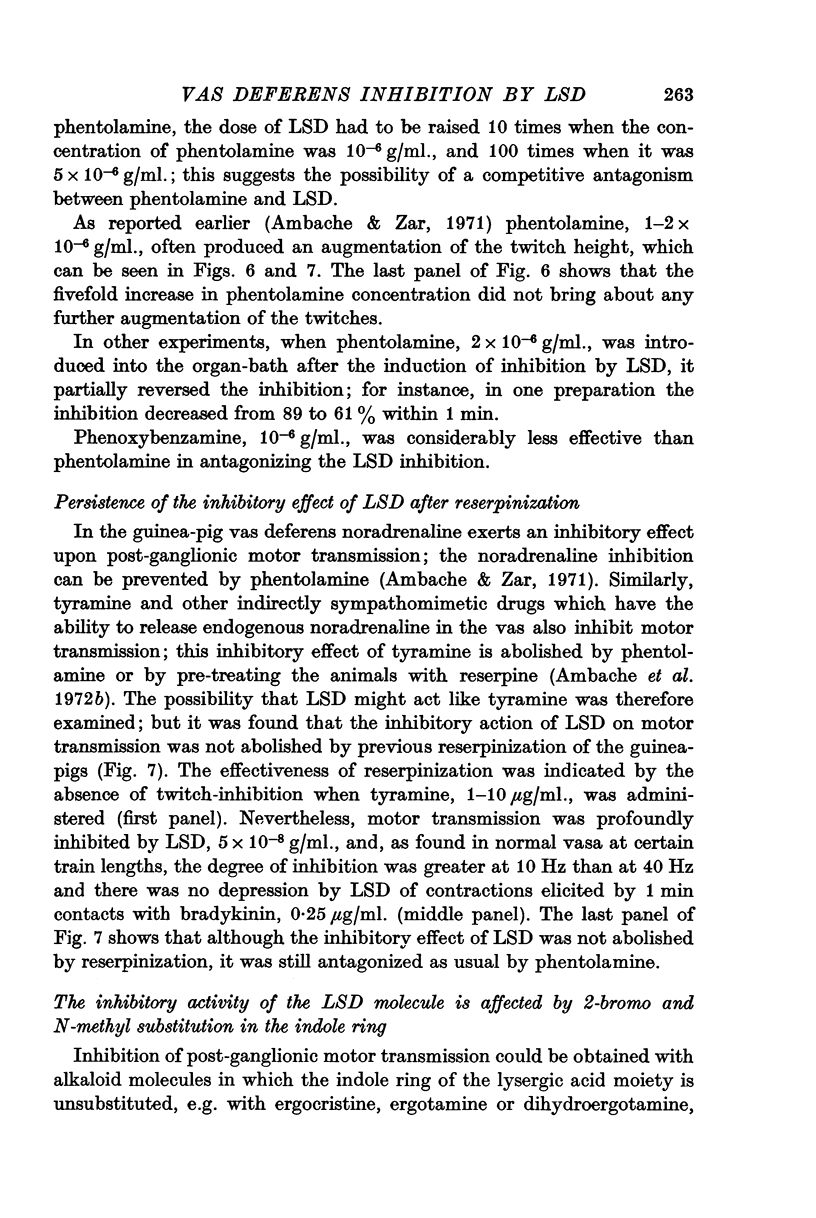
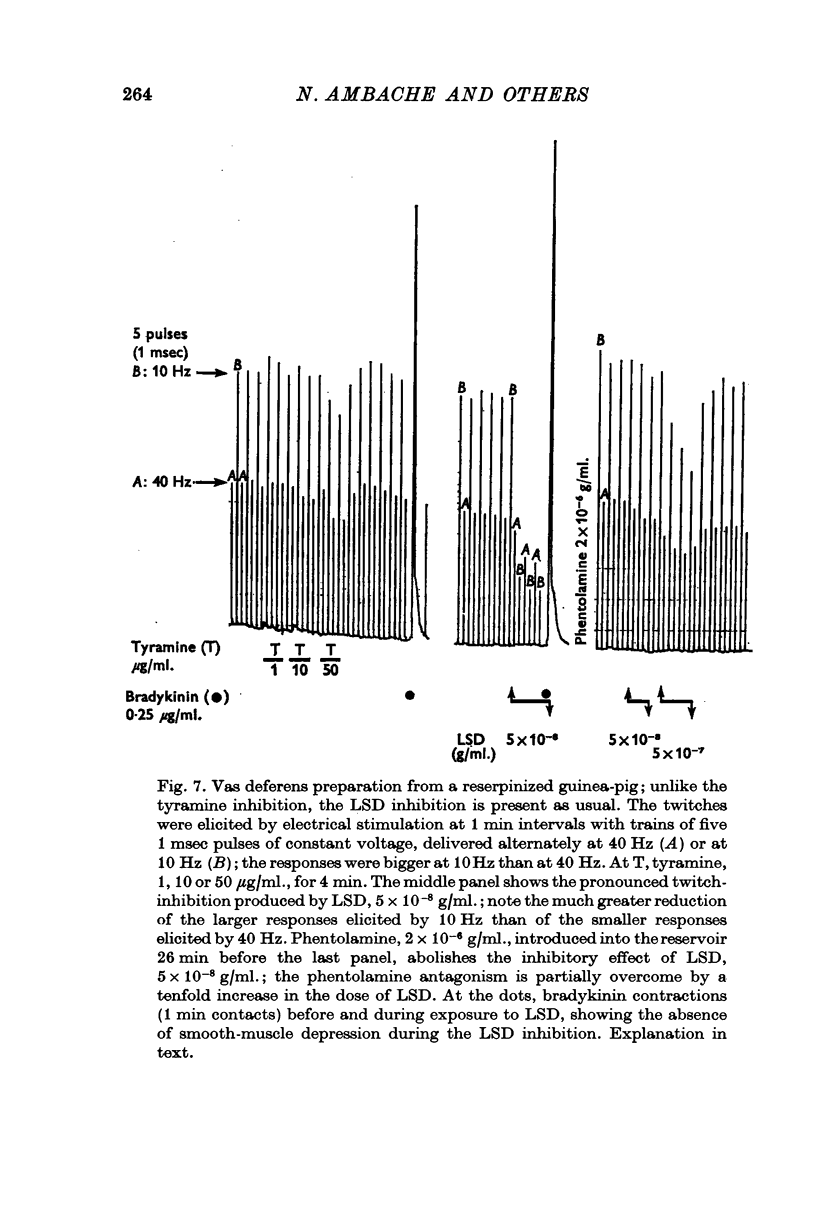
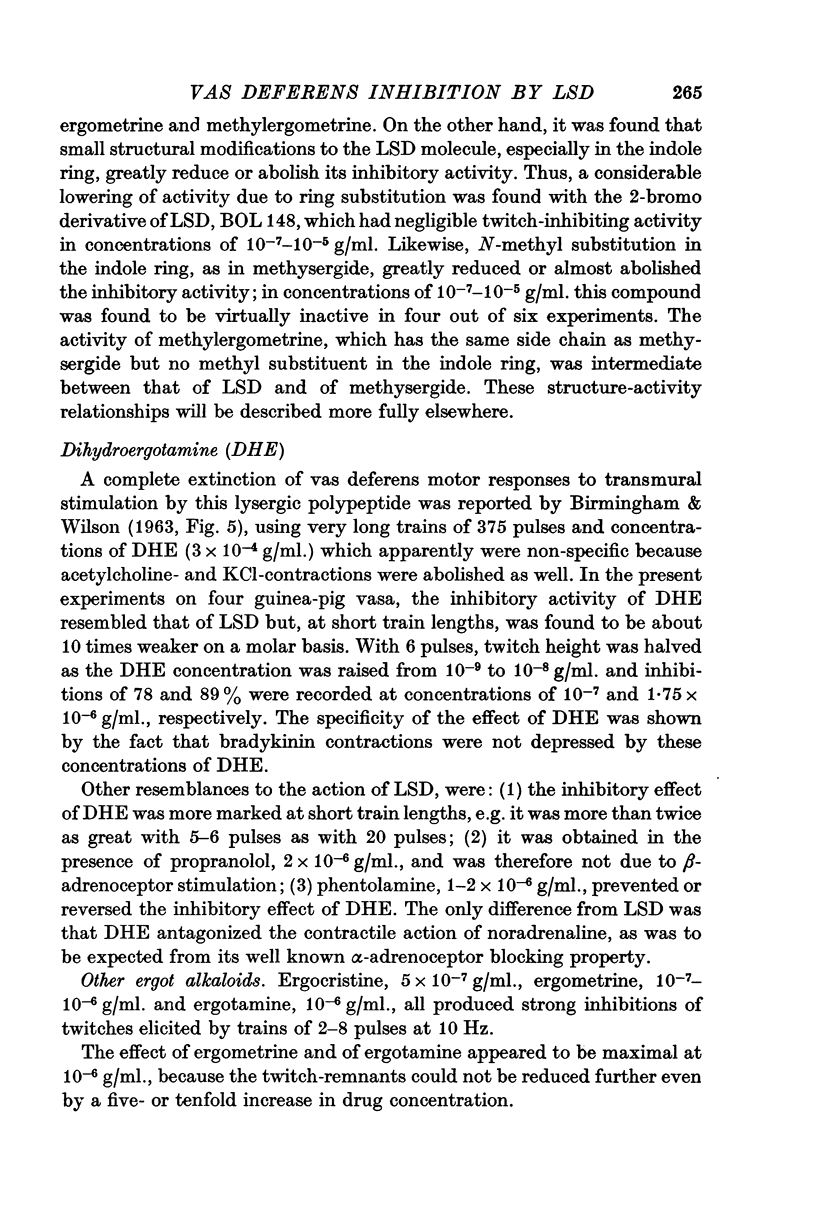
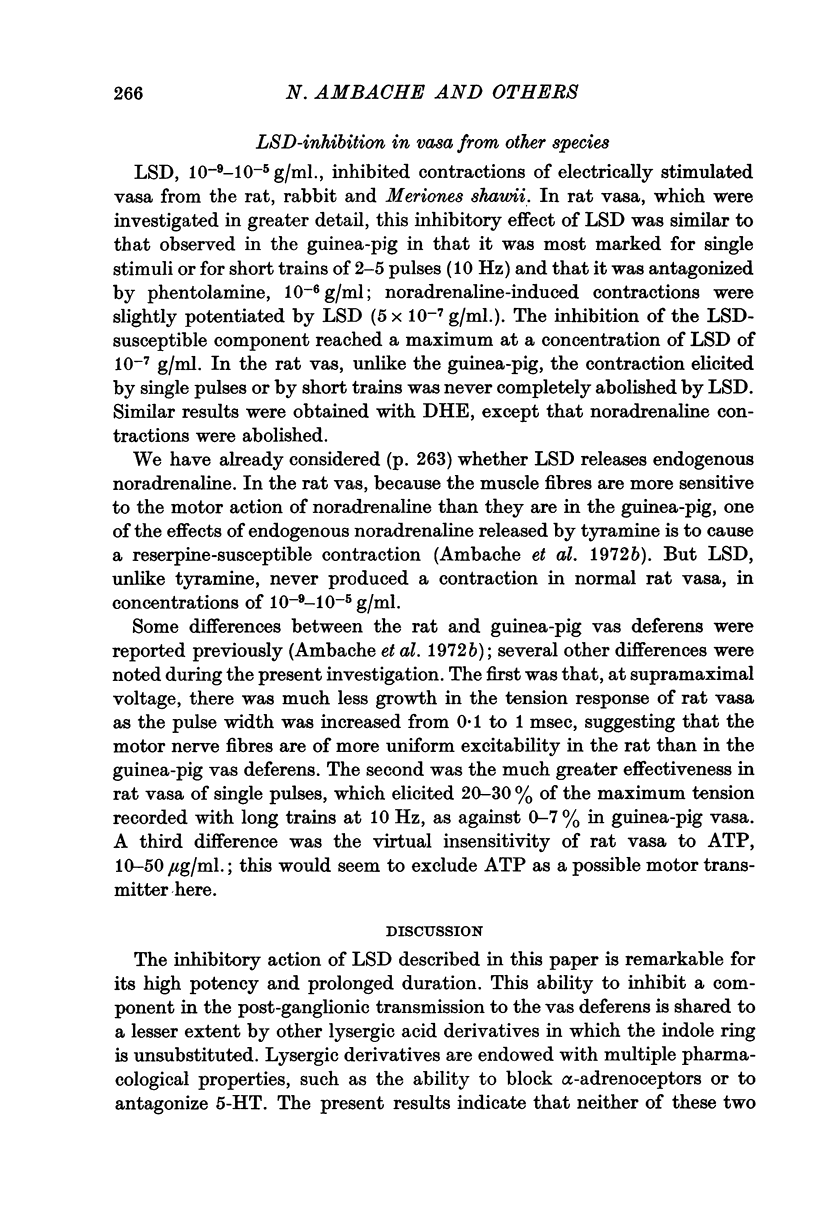
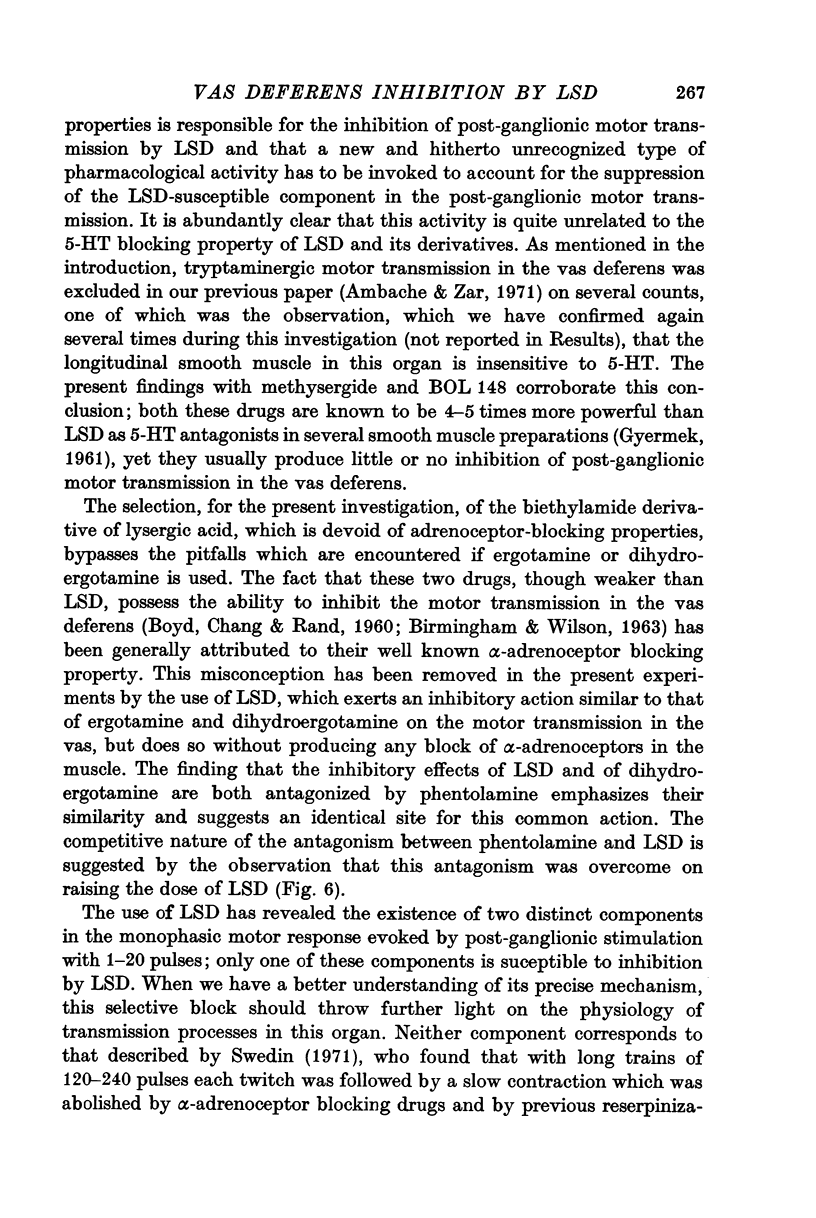
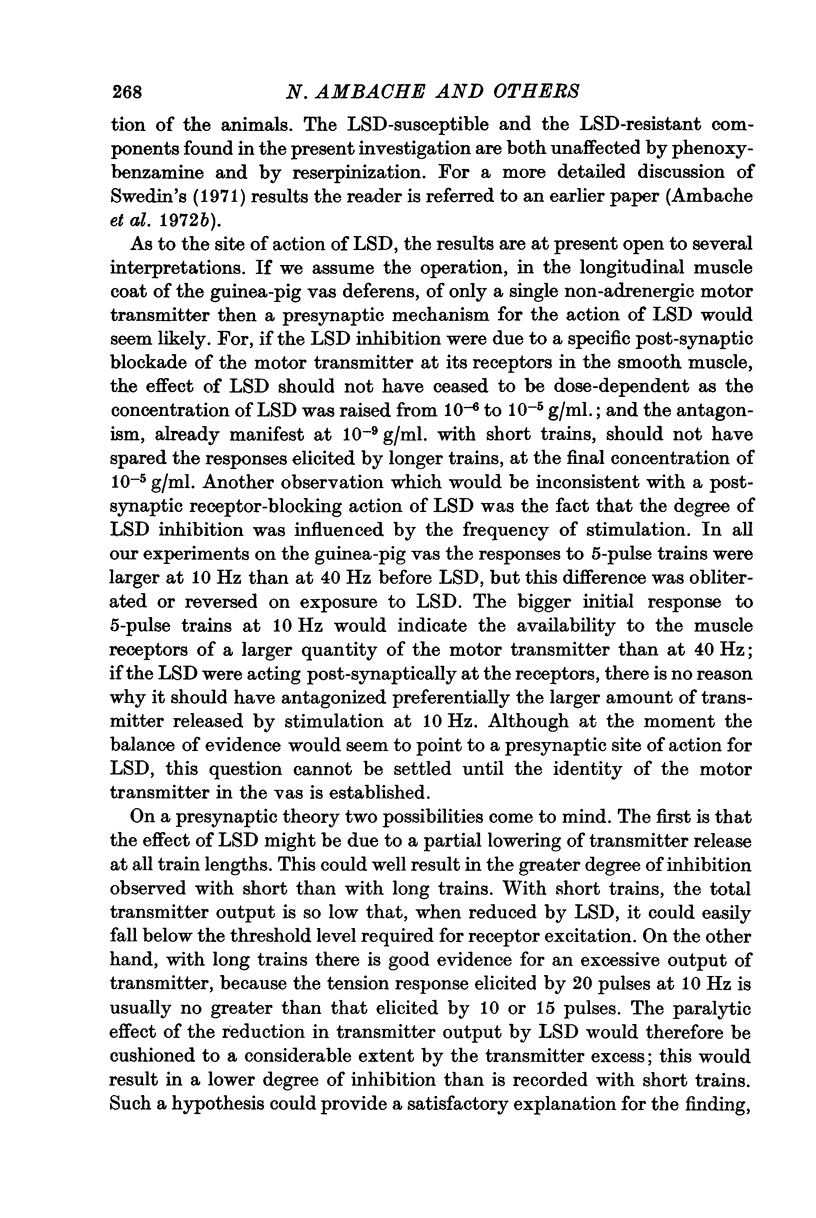
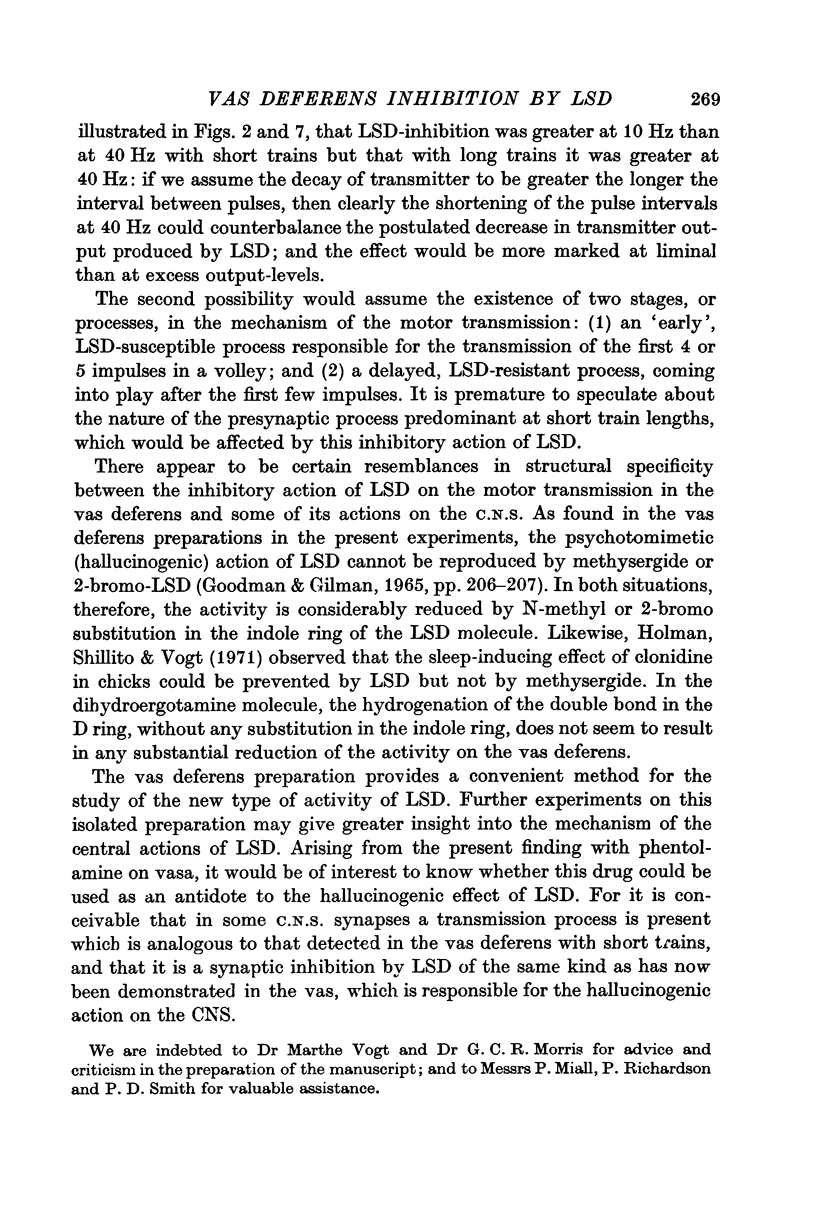
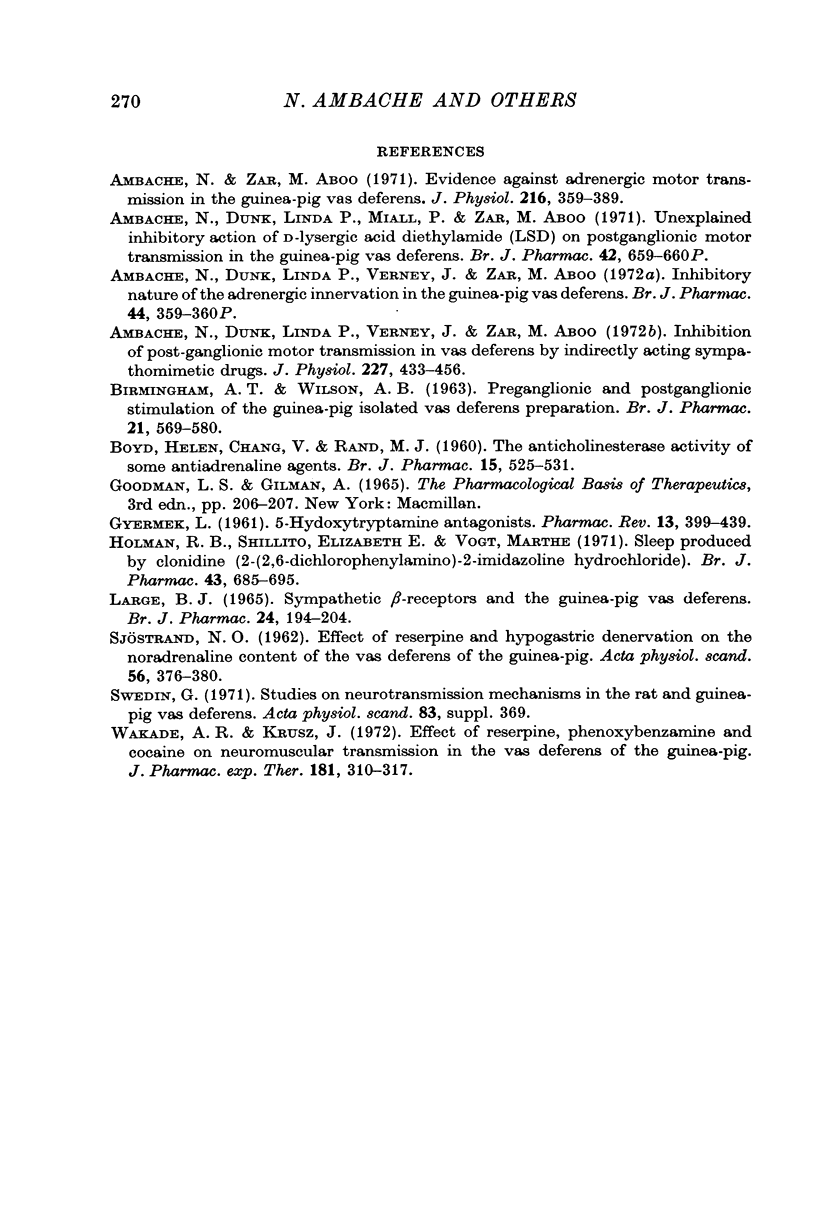
Selected References
These references are in PubMed. This may not be the complete list of references from this article.
- Ambache N., Dunk L. P., Miall P., Zar M. A. Unexplained inhibitory action of D-lysergic acid diethylamide (LSD) on postganglionic motor transmission in the guinea-pig vas deferens. Br J Pharmacol. 1971 Aug;42(4):659P–660P. [PMC free article] [PubMed] [Google Scholar]
- Ambache N., Dunk L. P., Verney J., Zar M. A. Inhibition of post-ganglionic motor transmission in vas deferens by indirectly acting sympathomimetic drugs. J Physiol. 1972 Dec;227(2):433–456. doi: 10.1113/jphysiol.1972.sp010041. [DOI] [PMC free article] [PubMed] [Google Scholar]
- Ambache N., Dunk L. P., Verney J., Zar M. A. Proceedings: Inhibitory nature of the adrenergic innervation in the guinea-pig vas deferens. Br J Pharmacol. 1972 Feb;44(2):359P–360P. [PMC free article] [PubMed] [Google Scholar]
- Ambache N., Zar M. A. Evidence against adrenergic motor transmission in the guinea-pig vas deferens. J Physiol. 1971 Jul;216(2):359–389. doi: 10.1113/jphysiol.1971.sp009530. [DOI] [PMC free article] [PubMed] [Google Scholar]
- BIRMINGHAM A. T., WILSON A. B. PREGANGLIONIC AND POSTGANGLIONIC STIMULATION OF THE GUINEA-PIG ISOLATED VAS DEFERENS PREPARATION. Br J Pharmacol Chemother. 1963 Dec;21:569–580. doi: 10.1111/j.1476-5381.1963.tb02024.x. [DOI] [PMC free article] [PubMed] [Google Scholar]
- GYERMEK L. 5-hydroxytryptamine antagonists. Pharmacol Rev. 1961 Sep;13:399–439. [PubMed] [Google Scholar]
- Holman R. B., Shillito E. E., Vogt M. Sleep produced by clonidine (2-(2,6-dichlorophenylamino)-2-imidazoline hydrochloride). Br J Pharmacol. 1971 Dec;43(4):685–695. doi: 10.1111/j.1476-5381.1971.tb07203.x. [DOI] [PMC free article] [PubMed] [Google Scholar]
- LARGE B. J. SYMPATHETIC BETA-RECEPTORS AND THE GUINEA-PIG VAS DEFERENS. Br J Pharmacol Chemother. 1965 Feb;24:194–204. doi: 10.1111/j.1476-5381.1965.tb02095.x. [DOI] [PMC free article] [PubMed] [Google Scholar]
- Wakade A. R., Krusz J. Effect of reserpine, phenoxybenzamine and cocaine on neuromuscular transmission in the vas deferens of the guinea pig. J Pharmacol Exp Ther. 1972 May;181(2):310–317. [PubMed] [Google Scholar]


